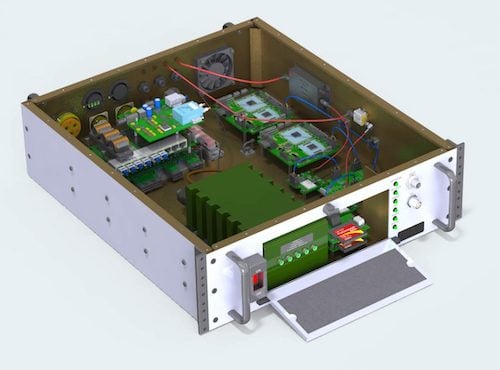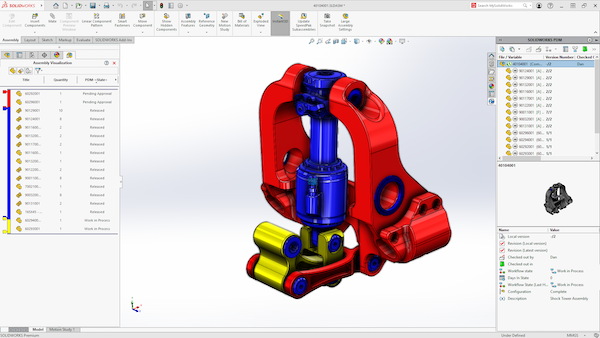Most people prefer a high degree of certainty in their lives. They don’t want to make a fresh set of decisions daily about how to commute — they just want to get in the car or catch the bus. Closer to home, mechanical engineers don’t want to start their day by deciding what software tools and what data they will use. They just want to get to work with the tools and information they have at hand.
The decisions close at hand may not change from day to day, but today’s mechanical and manufacturing engineers face a daunting set of issues. The rapid pace of change seems to be increasing.
There are advancements in material science, which may or may not be useful depending on access to the right 3D printing technology or other contemporary manufacturing processes. The initial engineering process may still start with a sketch, but the questions driving the sketch may come from a half-gig of point cloud data gathered in a reverse-engineering scan session. The work product is now more about models than drawings, and those models are being called upon to be the foundation of digital twins or become part of a dynamic virtual factory or world. Larger companies are taking advantage of machine learning and artificial intelligence — is your company?

Using CADENAS, engineering teams can manage component standardization even when there is no standardization on the CAD tools in use. Image source: CADENAS PartSolutions.
As a mechanical engineer, the goal has become more than creating useful designs. The new goal is to stay relevant in rapidly changing technology and business landscapes. Mechanical engineers must develop a deep understanding of new technologies and their potential applications. This requires a continuous investment in education and training, both through formal courses and on-the-job experience. CE units for learning more about weldments or surfacing is necessary but not sufficient.
How to Respond to Change
We have mentioned technologies that impact how a mechanical engineer does their job, but there are also external challenges in the marketplace. Every manufacturer is under pressure to respond to the sustainability agenda. There is relentless global demand for products that are energy-efficient, waste-reducing, and designed for recyclability. The old ways of thinking won’t be enough to compete for this new business.

Modular assembly is made easier when using tools such as CircuitWorks, a SOLIDWORKS add-on that allows mechanical and electrical engineers to work together. Image source: Javelin Technologies.
More than ever, mechanical engineers must take into account the entire life cycle of a product, from design and manufacturing to use and disposal. This requires an increased level of collaboration with other stakeholders. This will probably require rethinking the tools and connectivity schemes that allow for constant interaction with suppliers, customers, and regulatory agencies. The Zoom meetings of the pandemic were a warm up — and a wake up — for how to move forward.
Three methodologies are often mentioned when the conversation is about how engineers respond to change: Lean manufacturing, modular design, and agile methodologies. To keep this from being too long, let’s consider just one of them, modular design. Are you using these seven approaches to modular design?
Component standardization: Standardizing components and sub-assemblies can reduce the number of unique parts and simplify the overall design.
Platform design: Platform design involves creating a common base design that can be adapted for different product variations, reducing the amount of re-work required for each new product.
Modular assembly: Modular assembly involves breaking a product down into smaller, interchangeable modules that can be combined in different ways to create different products.
Sub-system modularity: Sub-system modularity involves designing sub-systems that can be easily swapped out or modified, allowing for more flexibility in product development.
Function-oriented design: Function-oriented design involves organizing the product design around functional modules, rather than physical components. This can simplify the design and make it easier to change or modify the product over time.
Assembly-oriented design: Assembly-oriented design involves organizing the design around the way the product will be assembled, reducing the number of unique parts and making it easier to assemble the product.
Product family design: Product family design involves designing a group of related products that share common components and subsystems, reducing the amount of unique parts required and simplifying the design process.
Conclusion
Modular design in mechanical engineering helps engineers cope with increasing change by allowing for flexible and scalable solutions. With modular design, components or subsystems can be easily replaced or updated without affecting the overall system. This approach enables engineers to quickly respond to changes in design requirements, such as incorporating sustainable technology, without having to completely redesign the entire system. Additionally, modular design facilitates more efficient and effective maintenance, reducing the impact of changes over time.

Searching for more information about Product Design & Manufacturing?
Click here!





Share This Post